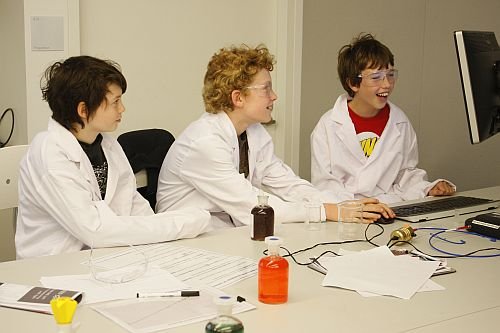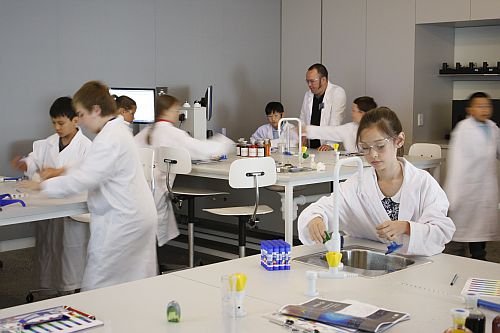15 April 2013
Twenty primary school students cooped up for the best part of two days in a full-size science laboratory sounds like a recipe for chaos. Instead the laboratory became an arena for excitement, enthusiasm and discovery.
In March 2012, 20 students aged between 11 and 12 years old from schools around Victoria descended on the Australian Synchrotron for a big experiment. Could light emission, absorption, diffraction and interference engage these young minds and take them outside their mental comfort zone? Would they enjoy the challenge?
 The laboratory sessions were part of the Beam Me Up ‘synchrotron journey’ introduced in association with G.A.T.E.WAYS, an independent organisation that provides opportunities for gifted children to participate in programs that challenge them intellectually and help develop their individual talents.
The laboratory sessions were part of the Beam Me Up ‘synchrotron journey’ introduced in association with G.A.T.E.WAYS, an independent organisation that provides opportunities for gifted children to participate in programs that challenge them intellectually and help develop their individual talents.
“We knew these students were already interested in science, so we wanted to challenge and seriously excite them,” synchrotron education officer Jonathan de Booy said.
The participants in the Beam Me Up program were nominated by their schools as interested in science and highly capable in maths. They toured the synchrotron, interrogated three real live synchrotron scientists, and conducted several laboratory experiments and internet research activities that extended them well beyond what would have been possible in a classroom setting.
The students used spectrometers to record the emission spectra of several different elements in gas form, observing that different elements emit different wavelengths of light. They used their spectra to identify unknown gases – including those inside a compact fluorescent tube.
For the next experiment, the students measured the wavelengths of light absorbed by different coloured food dyes and then identified the dyes present in unknown solutions and the concentrations of these dyes.
A third and more challenging experiment involved looking at how light passing through one or more narrow slits is diffracted, and how the diffracted light waves can then interfere with each other, reinforcing or cancelling each other out and creating a combined wave that can be stronger or weaker than the original waves. This experiment drew on a group internet research task that asked the students to explain ‘diffraction’ and ‘interference’ and find out the important characteristics of a crystal.
“Judging by the level of enthusiasm in the laboratory, we achieved our mission,” Jonathan said. “I was impressed to find that some of the students were able to ‘get’ the concepts as quickly as those in year 10 or even year 12. They were a great bunch of kids.”
The Beam Me Up synchrotron journey will be offered again later this year through G.A.T.E.WAYS.
